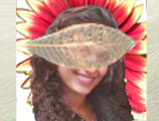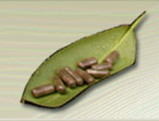 Loading... Please wait...
Loading... Please wait...Providing 25 Years Of Premium Service
Storewide Sale - Save 20%
Blog - vedas
Ayurvedic substitutes for conventional treatments
Posted on 30th Jul 2014
The roots of Ayurveda can be found in the Vedic scriptures known as “Atharvaveda”. The Vedas are some of the oldest scriptures on Earth, with the original texts dating back to 1500 BCE. The original texts are still available and highly respected worldwide.
Atharvaveda deals with a variety of medical treatments for treating the sick and unhealthy. Therapies used in the treatments are Yoga, Meditation, Aroma, Herbs, Diet, Astrology, Gems and Stones, Amulets, Massage and Surgery.
Traditional Indian beliefs give further insight into the Vedas. It is said that the Indian deity Vishnu was reincarnated on Earth as Saint Veda Vyasa and wrote all the Vedas. His students Charak, Sushruta and Vagbhata wrote about their research on the Vedas and classified the medical practices described in Atharvaveda as Surgical, Medical and Holistic.
This research was originally written in “Sanskrit” but has been translated into English and modern Indian languages. Recent studies shed more light on this ancient study of medicine. Atharvaveda has been classified into the following eight forms of medical treatments:
- Kaya Chikitsa governs internal diseases and infections
- Shalakya Tantra involves body parts above the neck
- Shalya Tantra deals with surgery
- Agada Tantra offers treatment for poisons (both endogenous and exogenous)
- Bhuta Vidya relates to psychology
- Kumar Bhartiya oversees pediatrics
- Rasayana is the science of rejuvenation and youthfulness
- Vajikarna addresses the science of fertility
Charaka Samhita: Charaka Samhita was written by Charaka during the reign of the Indian deity Krishna (another reincarnation of Vishnu). Charaka had a holistic approach. His belief that the body and soul have a deep connection was clearly seen in his holistic treatment of all disorders. Charaka Samhita was written in Sanskrit and has 8400 verses.
Sushrut Samhita: Sushruta was a student of Charaka who broadened the horizon of Ayurvedic knowledge by expanding on the original texts. Sushruta Samhita deals with the surgical way of medical treatment. Believe it or not, Sushruta performed plastic surgery, fracture treatments, cosmetic surgery, prosthetic surgery, and transplanted organs – all in the 6th BC! No wonder today he is called the “Father of Surgery”. He believed that surgery and medicine together constitute a true way of treating disease. Sushruta explained 72 different surgical treatments and used over 125 instruments to perform these surgeries.
Ashtanga Hridaya: Vagbhata studied human psychology and wrote Ashtanga Hridaya in the 6th Century BC. He emphasized the psychological aspect of disease by expounding on the work of Charaka Sushrut and Samhita Sushrut. His approach was more holistic than spiritual and he believed that 85% of all disease could be cured without the intervention of doctors.
Though Ayurveda originated from the Hindu religion, it has propagated across the globe and is serving humanity in a variety of ways. Ayurveda preaches service to the sick as the only way for medical practitioners, healers and doctors to achieve happiness.















